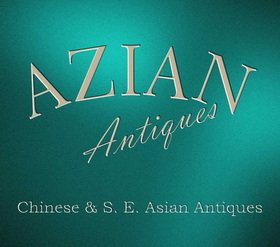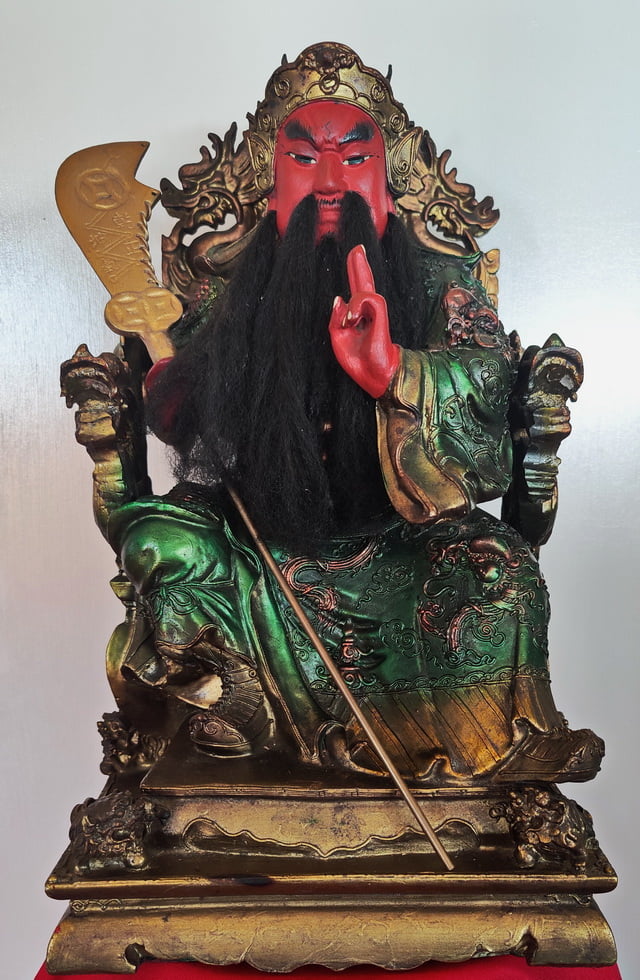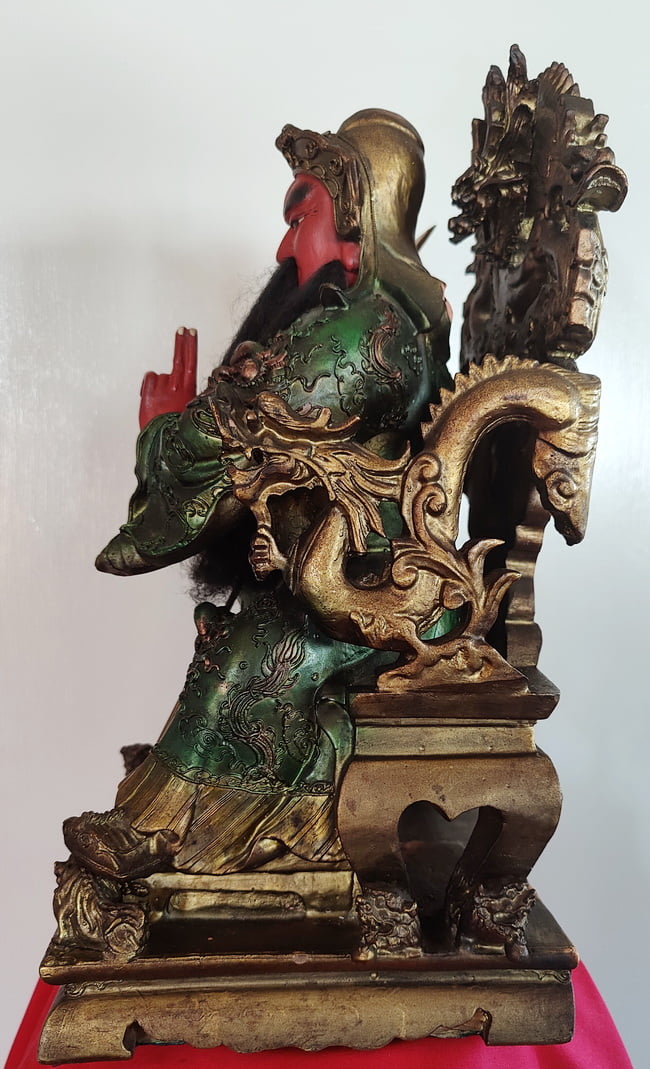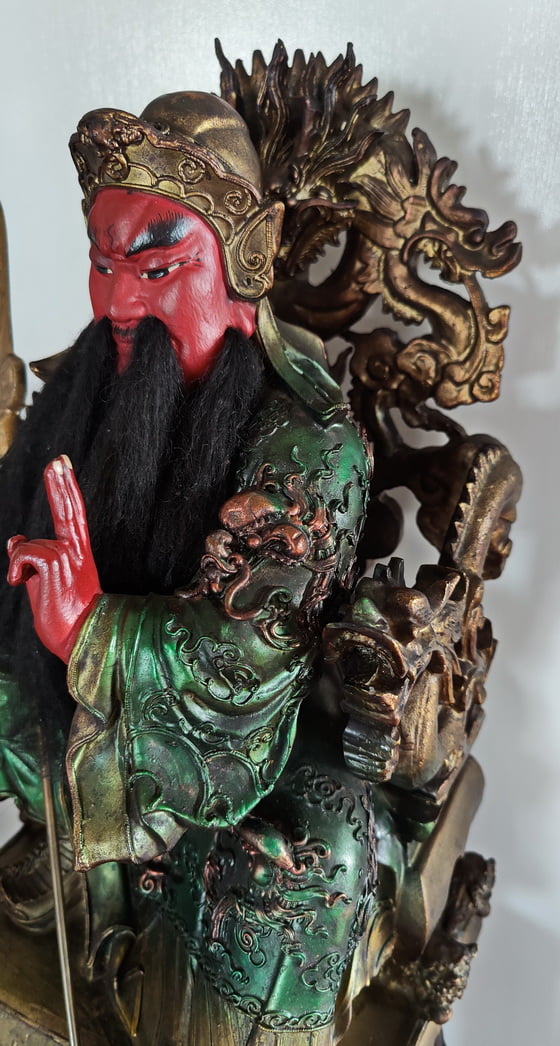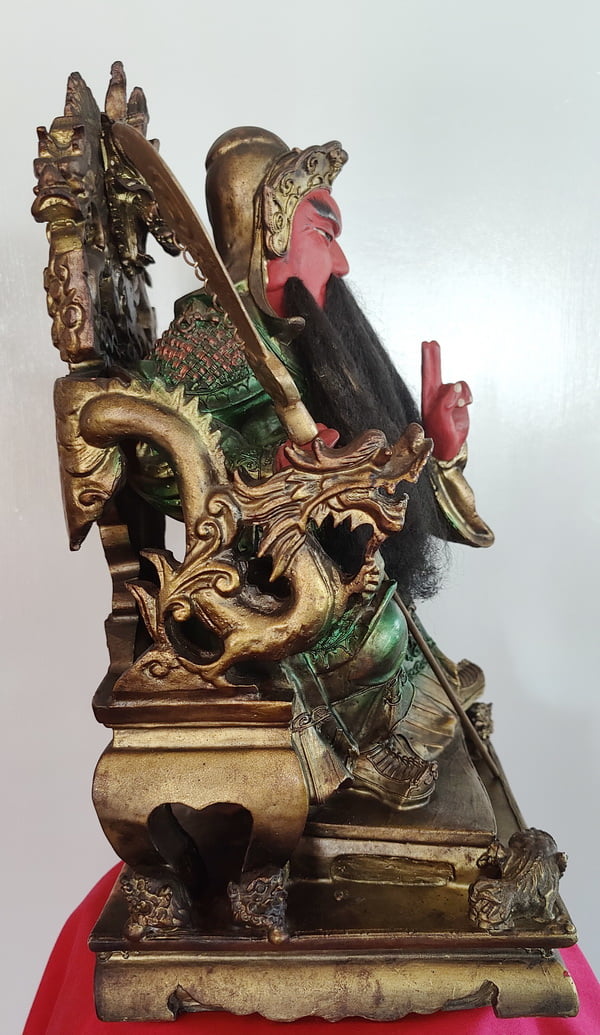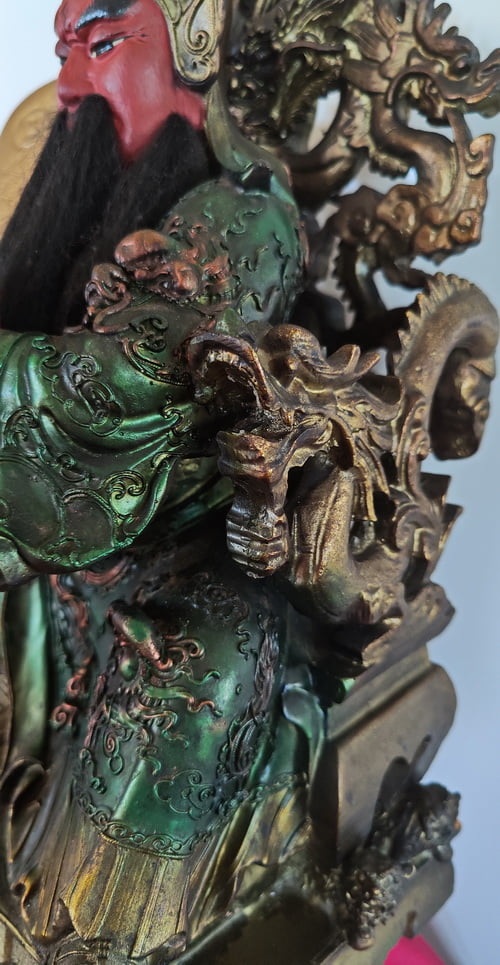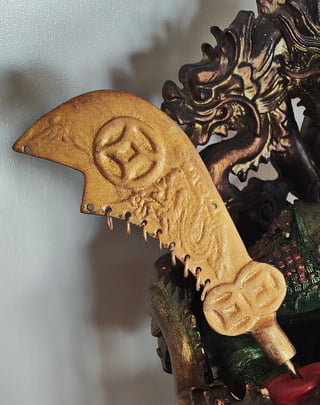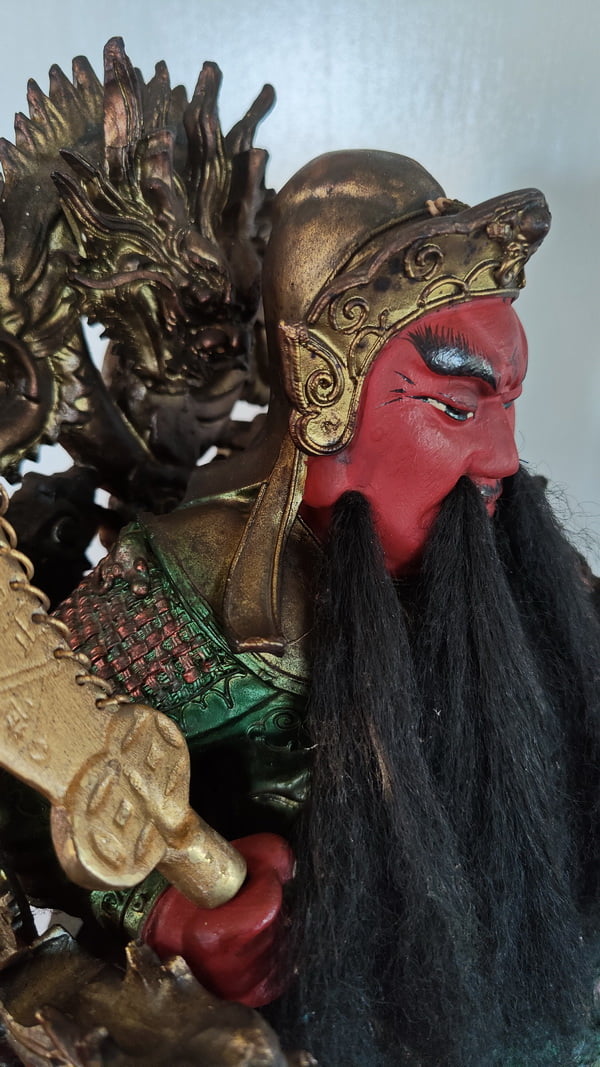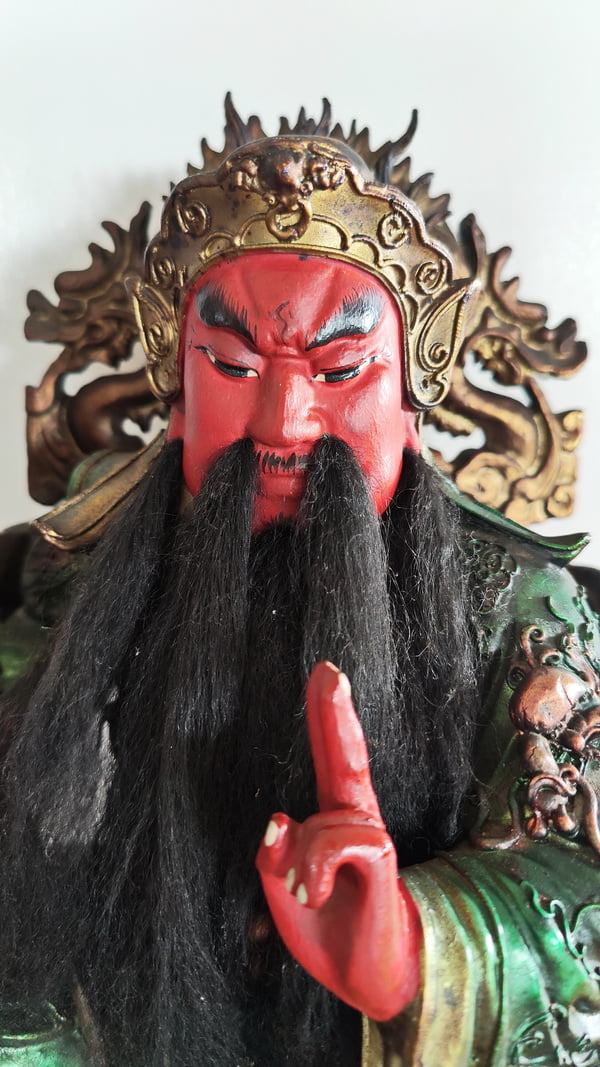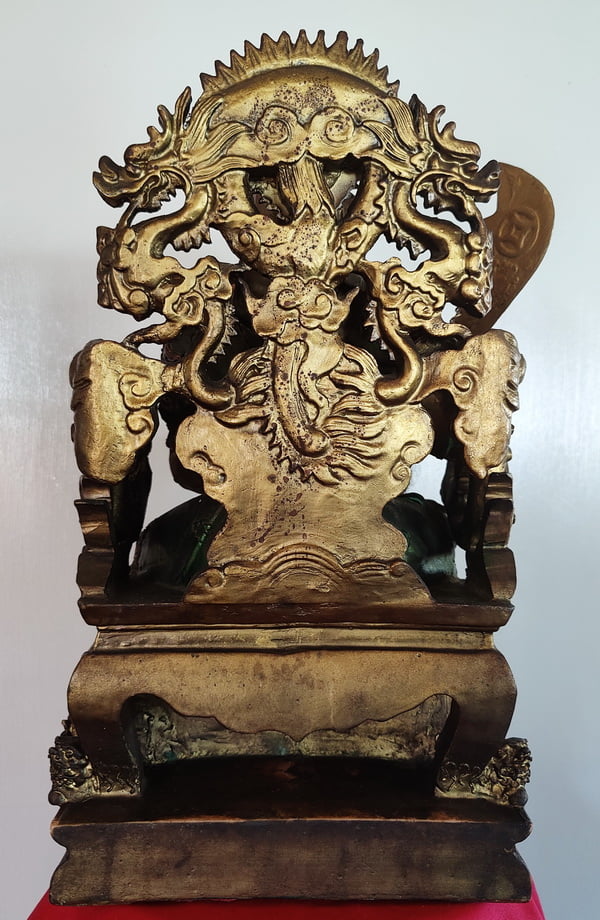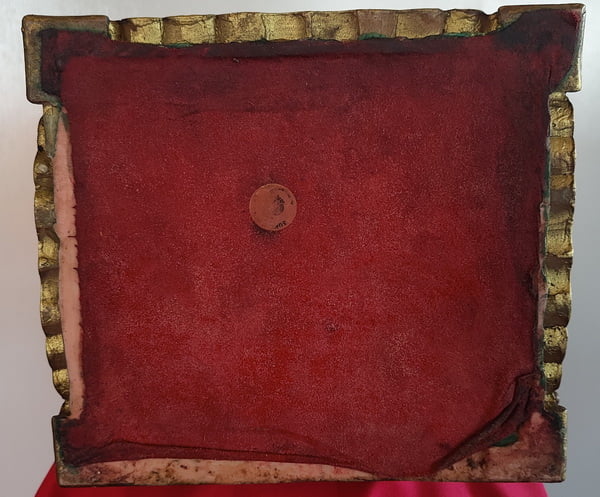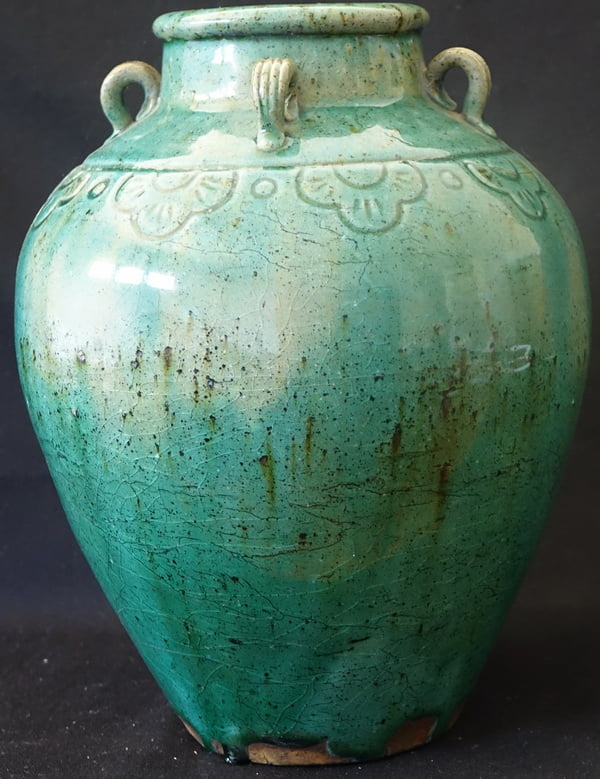Statue of the Chinese Taoist Deity Guan Yu, a famous general who lived in China during the Three Kingdoms (CE220 – CE280), is one of the best-known historical figures from Ancient Chinese history. Guan Yu was deified as early as the Sui dynasty (581-618) and is referred to as the “God of War”, and today is one of the most popular deities in China.
This statue of the Guan Yu deity is seated on a dragon throne with a single foo dog at the front of each corner and two at the back of each corner. The arms of the throne are in the shape of molded dragons as is the back of the throne. A dragon in relief decorates the inside of the backrest.
Read More
Because of his skills in military affairs, he earned a great deal of respect for his loyalty, strength, bravery, and kindness to his men. He was also recognized for his honesty and integrity and for that reason a figure of Guan Yu is often displayed on business premises as a sign of trustworthiness and a defender of their reputation.
This deity is also known as Guan Gong, he was famous for his involvement in the second Yellow Turban Rebellion, a peasant revolution, and one of the largest uprisings by peasants in Chinese history, sparked by outbreaks of plagues, natural disasters, failed harvests, high taxes, and famine which eventually contributed to the end of the later Han dynasty.
Although Guan Yu is predominantly a Taoist deity he is also a popular figure in Confucianism, small shrines are dedicated to this deity and displayed in shops and restaurants, not only in China but where ever there is a Chinese community such as Singapore, Taiwan, Hong Kong, Macao, and Malaysia.
Guan Yu is a major character in the semi-historical novel “Romance of the Three Kingdoms” written by Luo Guanzhong at the end of the Yuan dynasty (1279-1368). In the story, Guan Yu during a battle with Wu forces was captured and beheaded by Sun Quan after he refused to surrender.
Sun Quan sent Guan Yu’s severed head to Cao Cao, who performed the proper funeral rites burying his head with full honours and was later granted the posthumous title of “Marquis Zhuangmou”
Guan Yu – Buddhist legends
In 592CE, Guan Yu manifested himself one night before Ch’an Master Zhiyi, the founder of the Tiantai school of Buddhism, along with a retinue of spiritual beings. Zhiyi was then in deep meditation on Yuquan Hill when he was distracted by Guan Yu’s presence.
Guan Yu requested the master to teach him about dharma. After receiving Buddhist teachings from the master, Guan Yu took refuge in the triple gems and also requested the Five Precepts. Henceforth, it is said that Guan Yu made a vow to become a guardian of temples and dharma.
Legends also claim that Guan Yu assisted Zhiyi in the construction of the Yuquan Temple, built in CE593 during the Sui dynasty, which is still standing In Dangyang in Hubei province in current times. It is a major historical and cultural site protected at the national level and is China’s key Buddhist Temple.
Guan Yu is more frequently represented in a standing posture and less frequently in a seated position, he is usually shown with a red face and long beard, holding a sceptre and not to be mistaken for Tudigong, known as Lord of the Place or Earth God, who also appears sometimes with a pink colored face.
